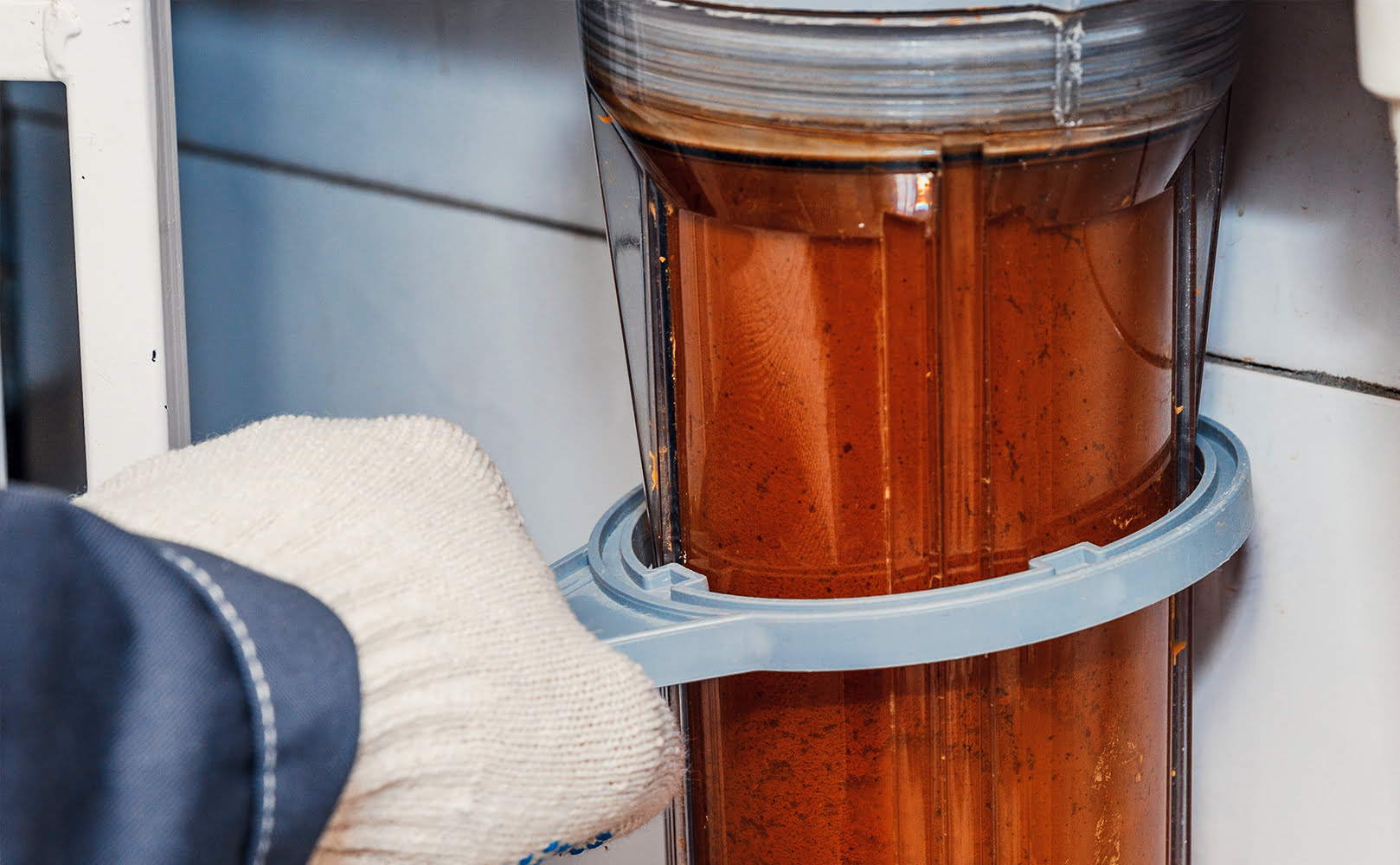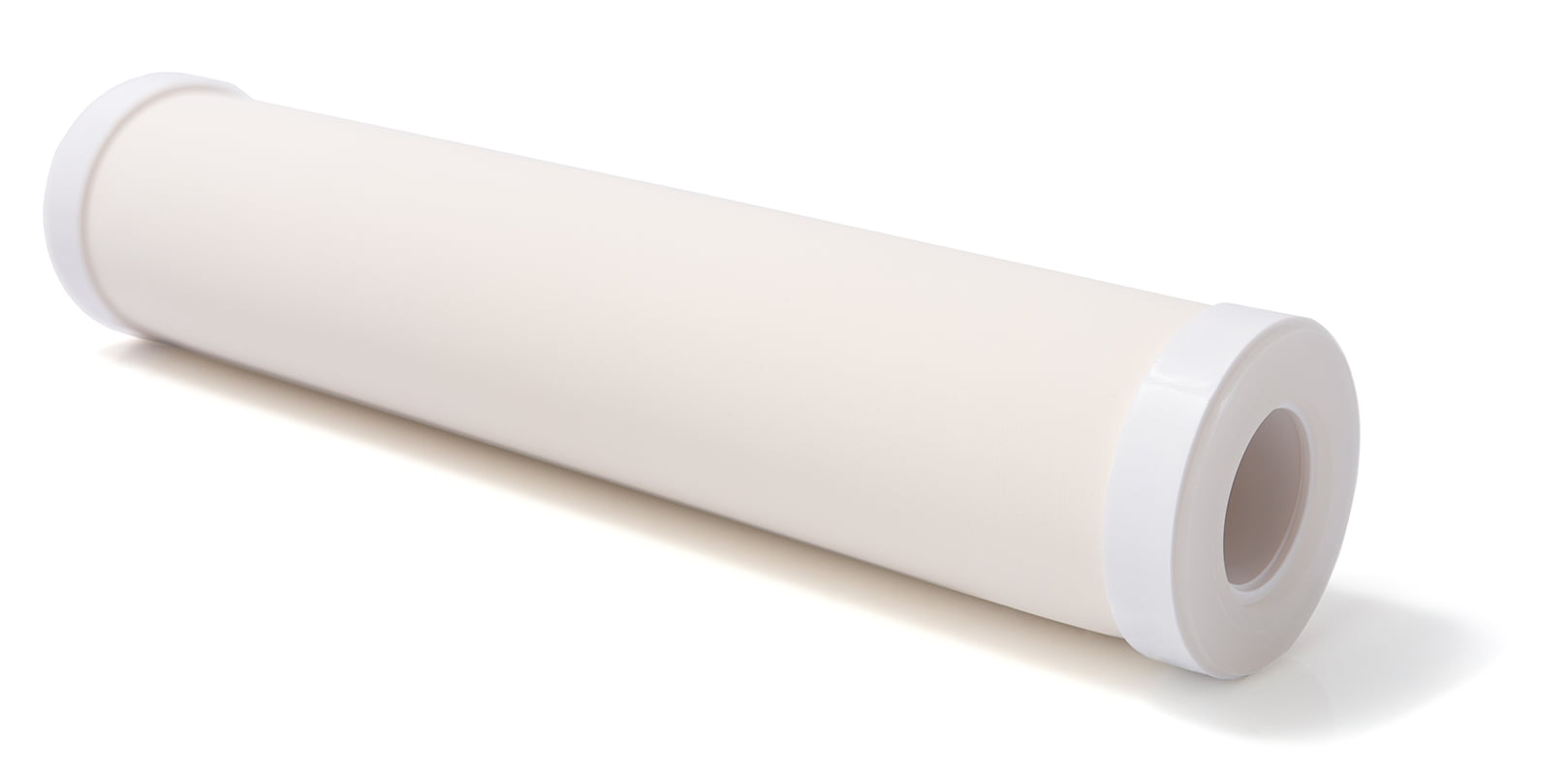Is There Anything Better Than Reverse Osmosis?
Written by: Gene Fitzgerald // Last Updated: Oct 18, 2023
This page may contain affiliate links. If you buy a product or service through such a link we earn a commission at no extra cost to you. Learn more.
Our bodies are made up of so much water that we really should use quality water to hydrate properly.
Considering so many water contaminants cannot be seen or tasted, it’s hard to know precisely what we expose ourselves to.
When seeking a water filtration method, reverse osmosis seems like it can do anything, but is it really the best? Or is there something better?
Key Takeaways
- The most suitable approach for water filtration depends on the specific application. Reverse osmosis is highly effective when targeting various types of water contaminants (at once), especially in cases of severe contamination. It’s also the only feasible choice for seawater desalination.
- RO may be overkill in cases of light contamination , and you may only need something cheap and easy, like an activated carbon filter.
Is There Anything Better Than Reverse Osmosis?
So, is there anything better than reverse osmosis?
When it comes to water purification, the most suitable approach depends on the specific application. Reverse osmosis can be highly effective when targeting multiple types of water contamination at once and in cases of severe contamination. It’s also the only feasible choice for seawater desalination.
What Is Better Than Reverse Osmosis?
While RO is one of the most efficient ways to purify water and also highly effective, water distillation is even more effective. However, distillation is not ideal for widespread use due to its energy-intensive heating process, lengthy purification time, and limited scalability.
In summary, reverse osmosis is highly effective at purifying severely contaminated water and can also be used at scale – in that regard reverse osmosis is best. Still, water distillation is even better than reverse osmosis in terms of achieved water purity. It’s just that water distillation is not good for use at scale.
How Does Reverse Osmosis Work and What Does It Remove?
Reverse osmosis is a filtration technique that uses water pressure to force water through a delicate RO membrane, filtering out contaminants larger than .0001 microns, such as microbes, heavy metals, and salts. Unlike natural osmosis, RO uses pressure to move water from a high to a low saline solution.
The RO process divides water into two streams. Water enters the membrane chamber and is forced through under pressure. Contaminants are trapped on one side, while clean water passes through to the other. While RO systems produce wastewater, this can be reduced or recycled.
Advantages and Disadvantages of Reverse Osmosis
Advantages of Reverse Osmosis:
- Advanced Water Filtration: Reverse osmosis provides comprehensive water filtration, removing a wide range of organic and non-organic pollutants.
- Improved Water Aesthetics: The process enhances the taste of water by removing contaminants, sodium, and other minerals and eliminates particles that can make water less appealing.
- Healthy Drinking Water: The high purity of RO water alleviates health concerns associated with contaminated drinking water.
- Cost-Effective: Compared to many other filtration methods or bottled water, using an RO system is less expensive, with minimal ongoing maintenance costs.
- Flexibility: RO filters are available in various sizes and configurations, allowing you to find one that fits your needs.
- Reduces Plastic Waste: Using an RO system at home significantly reduces reliance on plastic bottled water, reducing plastic waste and the risk of chemical leaching from plastic bottles.
- On-Demand Purification: With a storage tank, reverse osmosis provides filtered water on demand. Tankless units use high pressure for rapid filtration.
- Easy Installation and Maintenance: Point-of-use systems are typically easy to set up and maintain, with some offering customization options like additional filtration steps.
Disadvantages of Reverse Osmosis:
- Wastewater Production: RO systems produce wastewater as part of the filtration process, typically at a ratio of 4:1 waste to filtered water for home use. However, a pump can mitigate this, and wastewater can be repurposed for household chores.
- Mineral Loss: RO systems remove beneficial minerals such as magnesium, calcium, and potassium from water.
- Slow Filtration Speed: The RO process can be slow, requiring storage tanks for filtered water or powerful (and more expensive) pumps for faster filtration.
- Space Requirements: Home RO units require substantial space for installation.
- Potential Flat Taste: Some people find that RO water, stripped of most minerals and contaminants, tastes flat. However, many get used to this taste over time.
RO vs.
Let’s examine how reverse osmosis measures up to these other common water filtration methods.
Water Distillation
Water distillation involves heating the water until it transforms into steam, which is then condensed in a separate container, ensuring a contamination-free liquid. The notable advantage of this method is its ability to efficiently remove close to all water impurities, resulting in crystal-clear water.
Advantages of Distillation Over Reverse Osmosis:
- Portable: Distillers can be used in rented spaces or apartments as they don’t require attachment to plumbing like RO systems.
- Less Complicated Setup: Unlike RO systems that often need multiple stages of filtration, distillers have a more straightforward setup. They just need to be connected to a power source and provided with water to distill.
- Higher Efficacy Against Microorganisms: Distillers are more effective at eliminating bacteria and viruses, especially for non-city-treated water sources like wells. This is because bacteria can eventually grow on the RO membrane and potentially contaminate the water supply.
Disadvantages of Distillation Over Reverse Osmosis:
- Speed and Energy Costs: The biggest downsides of distillation are its speed and energy costs. Home distillation systems require high amounts of energy to run, resulting in more significant ongoing costs compared to alternatives like reverse osmosis.
- Lack of On-Demand Drinking Water: Distillation systems are slower in providing drinking water. Unlike the fastest home reverse osmosis systems that can produce a full gallon of drinking water or more within an hour, distillation is a time-consuming process. The water must boil, and steam must condense and collect in a storage container.
Sediment Filtration
Sediment filtration is a process designed to remove leftover particles that often settle at the bottom of a water container. These particles can not only impact the quality of your drinking water but can also damage pipes, appliances, and other components in your home.
A sediment filter removes visible impurities such as dirt, sand, dust, and turbidity, which contributes to the cloudy appearance of water. However, it cannot remove chemicals, heavy metals, etc. Nor does it improve the water’s taste or smell.
Advantages of Sediment Filtration Over Reverse Osmosis:
- Cost-Effective: Sediment filters tend to be highly affordable.
- Easy Replacement: These filters are easy to change, reducing maintenance efforts.
- Customizable Filtration Size: Sediment filters come with varying micron levels, allowing you to choose the size of the particles you wish to filter out.
Disadvantages of Sediment Filtration Over Reverse Osmosis:
- Limited Filtration: Sediment filters are excellent for filtering out larger particles, but they fall short when it comes to smaller contaminants.
- Additional Filters Required: To achieve the highest level of water purity, a sediment filter often needs to be combined with other types of filters. This could potentially increase the overall cost and maintenance requirements.
Carbon Filtration
Carbon filtration is a method of water purification that employs carbon, typically in the form of activated carbon, to extract chlorine, certain heavy metals, and organic compounds from water.
Carbon filters are also generally more cost-effective to purchase, install, and maintain than more complex water purification systems.
Advantages of Carbon Filtration Over Reverse Osmosis:
- Cost-Effective: Carbon filters are typically cheaper to purchase, install, and maintain than RO systems.
Disadvantages of Carbon Filtration Over Reverse Osmosis:
- Limited Filtration: While reverse osmosis removes most types of water contamination, carbon filtration is more limited.
- Inefficiency in High TDS Areas: In regions with high TDS, a store-bought carbon filter may not sufficiently improve the taste of tap water to match that of bottled water.
Ion Exchange Treatment
Ion filtration swaps ions using a resin, removing undesirable ones and introducing preferred ones. It’s commonly used in water treatment to eliminate contaminants like nitrate, arsenic, lead, chromium 6, boron, perchlorate, and uranium.
Advantages of Ion Exchange Filtration Over Reverse Osmosis:
- Water Softening: Ion exchange is often used in water softeners, making it an excellent choice for areas with hard water. A reverse osmosis membrane can foul rapidly when exposed to overly hard water.
Disadvantages of Ion Exchange Filtration Over Reverse Osmosis:
- Pollution Susceptibility: Ion exchangers can quickly become polluted by microbiology (such as film-forming bacteria) or suspended matter, significantly reducing their exchange capacity.
- Frequent Maintenance: Depending on the water usage and quality, ion exchange filters may require frequent regeneration or replacement, which can be time-consuming and costly.
Ceramic Water Filters
Ceramic water filtration systems have ceramic material to purify water by capturing floating particles through tiny pores (usually ranging from 0.5 to 50 microns). This process, acting as a sediment filter, ensures a clean water supply. Some ceramic filters have an outer shell and inner core, incorporating media like activated carbon or ion exchange resin. These media assist in removing contaminants like pesticides and heavy metals. Ceramic filters are commonly used in gravity systems, under sink, and countertop units.
Advantages of Ceramic Water Filtration Over Reverse Osmosis:
- Effectiveness Against Sediment: The ceramic filter removes sediment and other large particles from water exceptionally well.
- Cost-effective and Environmentally Friendly: Ceramic filters are often cheaper and more environmentally friendly.
Disadvantages of Ceramic Water Filtration Over Reverse Osmosis:
- Limited Contaminant Removal: Ceramic filters are less effective in removing organic chemicals.
- Frequent Cleaning Required: Ceramic filters need regular cleaning to maintain their effectiveness.
UV Disinfection
Ultraviolet (UV) purification is a water disinfection method that uses ultraviolet light to kill or inactivate bacteria, viruses, and parasites. The UV light disrupts the DNA of these pathogens, preventing them from reproducing and causing illness. However, UV purification doesn’t remove physical or chemical contaminants from the water.
Advantages of UV Purification Over Reverse Osmosis:
- Effective against Pathogens: UV purification is highly effective at killing or inactivating harmful microorganisms.
- No Change in Taste or Odor: Unlike reverse osmosis, UV purification doesn’t alter the taste or odor of the water.
Disadvantages of UV Purification Over Reverse Osmosis:
- Doesn’t Remove Physical or Chemical Contaminants: UV purification only targets living organisms. It will not remove any other contaminants like heavy metals or organic chemicals.
- Requires Electricity: UV purification systems need electricity to operate, which may not be ideal in areas with unreliable power supply.
- Requires visually clean water: Water fed to a UV water purifier needs to be visually clean in order to allow penetration by the UV light rays.
Gravity Water Filters
Gravity water filters use the force of gravity to push water through filters, effectively purifying it. Typically consisting of two chambers, you pour unfiltered water into the upper chamber, and gravity draws it down through the filters into the lower chamber.
The specific filter elements used determine the types of contaminants removed. Ceramic filter elements with a core of carbon or mixed media are highly effective, eliminating viruses, bacteria, cysts, chlorine, chloramine, pesticides, disinfection byproducts, heavy metals, drug residues, and more.
Advantages of Gravity Water Filters Over Reverse Osmosis:
- No Need for Electricity or Plumbing: Gravity water filters operate without electricity or a plumbing system, making them ideal for emergencies and outdoor use.
- Ease of Use: They are generally easy to use and maintain.
Disadvantages of Gravity Water Filters Over Reverse Osmosis:
- Manual Refilling Required: You need to refill the upper chamber manually, which may not be practical for large households.
So, How to Choose?
There are two main things to consider when choosing the right water filtration method for you: What is in your water, and what your aim or intended use for the filtered water is.
Have Your Water Tested
Instead of simply purchasing any water filter, test to determine the specific contaminants present. Once the contaminants are identified, you can choose the most appropriate filtration method to address the issues at hand.
While reverse osmosis is undoubtedly a highly effective method of water treatment, it may not always be necessary, as there are alternative ways to filter your water. The decision to use RO should take into account factors such as the severity and variety of the contaminants. In cases of significant contamination or multiple contaminants, a home RO system is often the best solution.
What Do You Want to Achieve?
When it comes to getting rid of harmful contaminants in your water, a home reverse osmosis system is often the best option. But if you’re mainly focused on improving the taste and smell of your water, a basic carbon filter might do the trick. Likewise, if you’re specifically concerned about removing iron from your water, investing in an iron filter could be the right solution. There are lots of different choices available based on your specific needs.
If you have any thoughts about the question, what is better than reverse osmosis, please don’t hesitate to leave a comment below!
Information provided on BOS is for educational purposes only. The products and services we review may not be right for your individual circumstances.
We adhere to strict editorial guidelines. Rest assured, the opinions expressed have not been provided, reviewed, or otherwise endorsed by our partners – they are unbiased, independent, and the author’s alone. Our licensed experts fact-check all content for accuracy. It is accurate as of the date posted and to the best of our knowledge.





